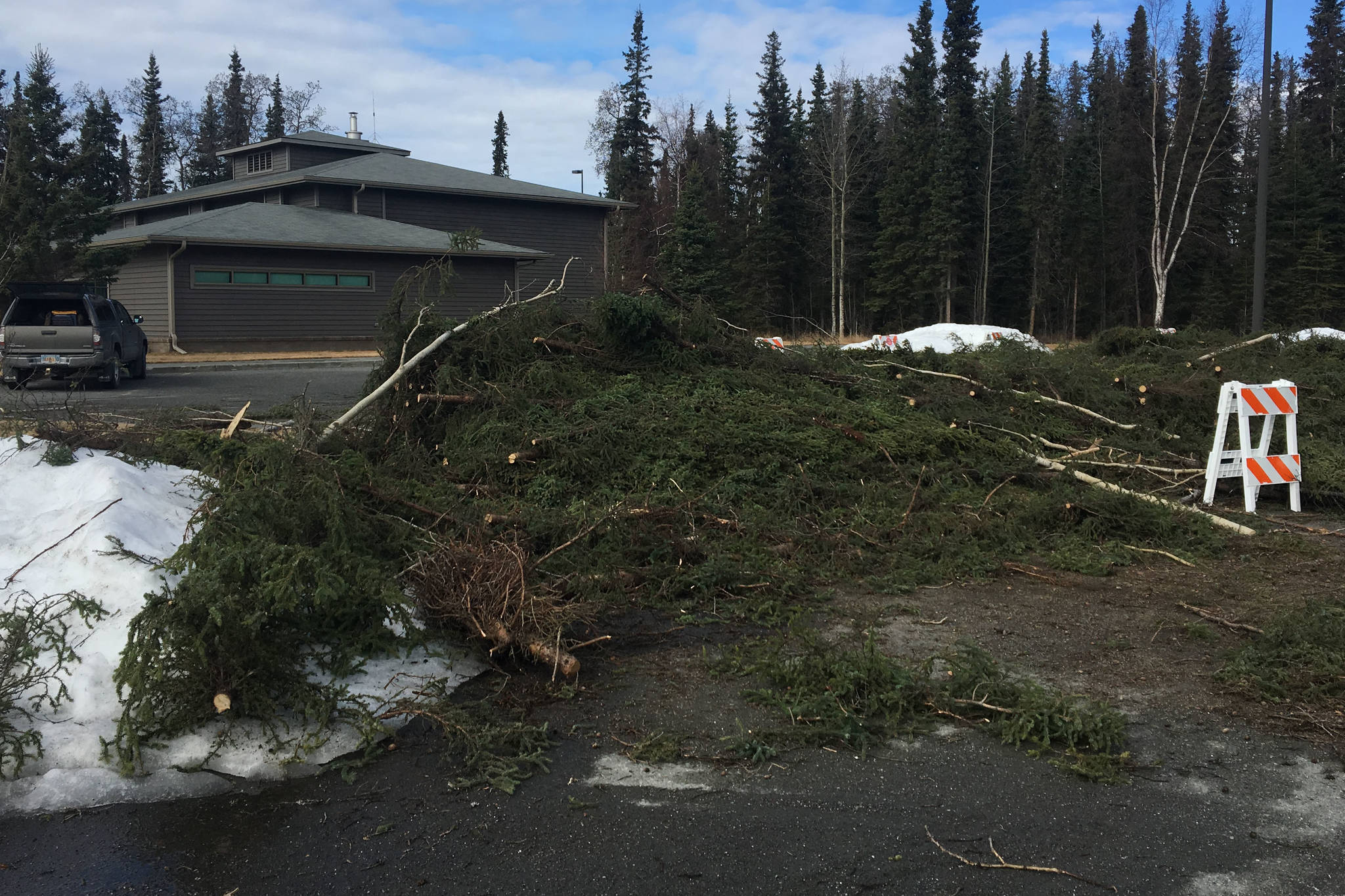Several local and state agencies recently collaborated on an initiative to protect people from wildfires while also protecting riverbanks from erosion.
The initiative, Spruce for Salmon, provided black spruce trees — cut down in Sterling — to property owners to place along riverbanks.
Known as revetment, the process prevents soil erosion and provides shelter for juvenile fish. Over the course of several days last week, property owners picked up dozens of felled spruce trees from the Kenai River Center to be used in various stream bank protection projects.
Steve Kehl, who has property along the Kenai River, took 18 trees that he plans to use for 60 feet of revetment. Kehl said that he has used spruce trees for revetment in the past and needed to replace the ones he had placed years ago. Kehl plans to use the spruce trees in combination with another bank protection technique that involves burying coir logs between the bank and the shoreline and growing alder above the buried coir logs to secure the soil.
Kehl pointed to the debris of a wooden walkway that had collapsed due to the eroded soil along the shore, and said that mitigating erosion from the river is a constant battle. Kehl said that while he understands that everything will be taken by the river eventually, his attitude toward the inevitable erosion of the riverbank is “not on my watch.”
The Spruce for Salmon initiative came about this year as a continuation of the Sterling Fuel Break project, which began back in 2016. Agencies, including the Kenai National Wildlife Refuge, the Alaska Division of Forestry, the Alaska Department of Fish and Game, the Kenai Peninsula Borough, Chugachmiut Corporation and Cook Inlet Regional Incorporated, initially aimed to clear roughly 8.5 miles of land on the border between Sterling and the Kenai National Wildlife Refuge.
Assistant Fire Management Officer Mike Hill said that this area was chosen because of its proximity to a residential population as well as its concentration of black spruce trees, which is the most flammable species of tree in Alaska. Hill said that the purpose of a fuel break is to slow down and contain the spread of wildfires, giving emergency responders more time to act and potentially saving lives.
As the spruce trees fell, questions arose as to what to do with them. Last year Hill and his team experimented with the idea of giving the spruce to homeowners with riverfront property for revetment. Revetment is a process where spruce trees are are installed parallel to the riverbanks and secured with cables and earth anchors buried underground, according to a guide on stream bank revegetation and protection published by ADFG. The trees overlap with each other and decrease the amount of runoff and erosion that occurs on the riverbank by capturing the sediment that would otherwise fall into the water.
Decreasing runoff is important for fish habitats and especially juvenile salmon populations, because excessive sediment can kill salmon eggs, make it difficult for juvenile salmon to see their prey and irritate gills to the point of infection and death. The overhanging branches of the spruce trees also slow the flow of the river along the banks, provide shelter for juvenile fish and provide insects for the fish to eat.
Hill said that last year’s experiment giving away spruce trees proved to be a success. The revetment process provided property owners a relatively easy, inexpensive and nonintrusive option for bank protection when compared with other techniques.
“The biggest limiting factor of revetment actions is the availability of materials,” Hill said, noting that it is not always easy for a homeowner to find a couple dozen spruce trees to use for their riverbanks. Hill said that giving the trees a new purpose is a much preferred alternative to simply burning them or sending them through a wood chipper.
With that in mind, the agencies working on the Sterling Fuel Break teamed up this year with the Kenai River Center to launch Spruce for Salmon in earnest. Black spruce trees that had been cleared during the last week of March were made available for free at the Kenai River Center for private homeowners to use in their stream bank protection projects. According to Hill, the trees were all spoken for within a couple of days, and another crop of them could be made available once the Sterling Fuel Break project has been completed.

